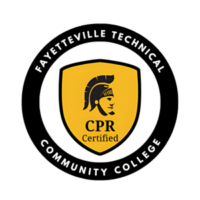The course alignment initiative at Fayetteville Technical Community College is in full swing! These notes provide more clarification on the process, expectations, and feedback cycle [Download pdf]. Please contact the Center for Faculty Development with questions!
IMPORTANT NOTES:
- Course maps should be submitted to designated departmental course mapping leads according to the directives your Dean area has provided. Feedback will be provided through your department’s internal processes.
- Once the course map has then been approved, it is ready to be transitioned to Blackboard Ultra.
Key Terms
- Aligned: When a course is “aligned,” it means that the following process is successfully reflected in the course map:

-
Assessments: Assessments can be formative or summative. Assessments determine if the module objective(s) or course outcome(s) have been successfully mastered. Assessments evaluate previously learned content and/or skills and should also inform the instructor whether previous content (or skills) should be reviewed or if new content (or skills) can be introduced. Assessments also inform the instructor which students need additional support or extension based on the determined level of mastery.
-
Assignments: Assignments are tasks directly aligned to specific Module Objectives. These are usually graded tasks requiring students to demonstrate mastery of Module Objectives and course content/skills.
-
Bloom’s Taxonomy: Bloom’s Taxonomy is a classification system used to define and distinguish different levels of human cognition—i.e., thinking, learning, and understanding. Educators have typically used Bloom’s taxonomy to inform or guide the development of assessments (tests and other evaluations of student development of assessments (tests and other evaluations of student learning), curriculum (units, lessons, projects, and other learning activities), and instructional methods such as questioning strategies that can be applied to any content area.
Bloom’s Taxonomy Action Verbs Graphic
Use the resources above to evaluate Course Outcomes, Module Objectives, and Assignments for strengthening students’ understanding of the content. Use clear and active language in Outcomes, Objectives and Assignments for clarity and relevance.
- For example, “Demonstrate understanding of the digestive system,” modify that objective to incorporate clearer, more active language and a higher level of Bloom’s Taxonomy.
- A more precise and effective objective would read, “Describe the functions of the organs in the digestive system.”
- The Assignment and/or Assessment would be for students to, “Label the parts of the digestive system and explain how each part functions.”
- A rubric could be used to evaluate open-ended responses (or to measure mastery of each skill level in an application-based course).
- In order to advance the assignment and meet the necessary level of comprehension, students need to develop a deeper connection to the subject matter.
Consider the following, higher-order thinking assignments:
- Compare and contrast the functions of two major organs from two different organ systems.
- Explore diseases that affect the (insert organ system). Selecting one of those illnesses, design an infographic that illustrates symptoms and potential treatments.
- Analyze and evaluate data on the effectiveness of a specific psychotropic drug. Create an infomercial outlining your findings.
- Investigate a non-functioning electrical outlet to discover the cause. Create a short video tutorial (YouTube style) describing the problem and explaining how to fix it.
- Develop a model of (insert topic) and use it to teach the information to others
Course Alignment: Course Alignment is a campus-wide initiative of quality assurance. This is the first step in the process of certifying FTCC courses before applying the Quality Matters assessment rubric.
Course Description: A course description is a brief overview of a course that informs students about what they will learn, why they will learn it, and how they will learn it. This description is provided by and comes directly from the NC Combined Course Library. It should not be altered. Course Outcomes should be derived from this description and in some cases, course outcomes are provided by the state. If so, they must be used on the course map.
Course Outcomes: Course Outcomes indicate what broad, overarching skills and/or content should be demonstrably mastered at the end of the course. Derived directly from the prescribed Course Description, Course Outcomes should then be broken down into specific Module Objectives for targeted learning.
Measurable: This term refers to whether mastery of an objective can be determined.
- For instance, a Module Objective such as, “Demonstrate an understanding of the importance of the American Revolution” is difficult to measure for mastery. How will the instructor determine that learners “understand?”
- A more effective objective would be, “Analyze and explain the impact of the American Revolution on American foreign policy.” Then, a targeted, measurable assignment would be to, “Develop an argument agreeing with or defending the following statement: The American Revolution impacted and influenced America’s foreign policy until the Jacksonian era.”
- In an application-based course, a measurable Module Objective might be, “Explain common/potential health issues in post-surgical patients.” Then, an aligned Assignment could be, “Discuss potential health issues of post-surgical patients. Select one common issue and develop a treatment plan for overcoming that potential obstacle.”
Module Objectives: Module Objectives are specific, targeted learning goals that break the broader Course Outcomes into smaller, measurable chunks. Assignments and assessments are directly aligned to these Module Objectives, completing the thread of alignment that starts with the Course Description and weaves through the course.
The FTCC Center for Faculty Development is available to support the Course Alignment Initiative as well as other programs, plans, and needs of our faculty and staff. Please email the Center (cenfacdev@faytechcc.edu) for additional clarification, questions, or further assistance in this process.


































